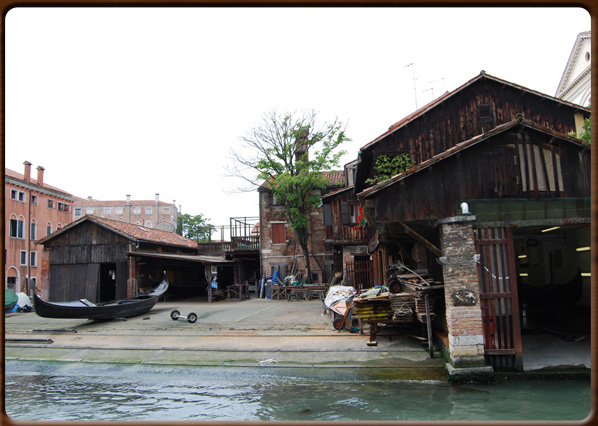On 4th November 1966 a complex natural disaster devastated two much-loved and world famous Italian cities of art: Florence and Venice. As a result, UNESCO decided to speed up the creation of a group of scholars dedicated to establishing the criteria and principles for choosing and protecting assets that would shortly become the World Heritage List.
Response to the world-wide appeal for help launched by the then Director General of UNESCO, René Maheu, was immediate and impressive, involving various levels of society and public institutions.
What had happened?
The Venetian phenomenon of “acqua alta” (high water) had, on 6th November 1966, been exceptionally high and lasted a whole day, causing so much damage that water and electricity supplies were cut owing to fuel leaking from central heating tanks.
Naphtha and diesel rose to the surface on account of their specific gravity and added to the problems, leaving black marks on the walls indicating the water levels as these gradually dropped.
UNESCO took action in various directions: a UNESCO office was established in Rome with the task of collaborating with the Italian authorities and following the implementation of the legislative measures required; adopting an idea coming from various international organisations, especially ICOMOS (Conseil International des Monuments et des Sites) and working alongside the Italian body responsible for museums (Soprintendenza ai Musei), UNESCO prepared a description of the state of conservation of the damaged works of art, while an inventory of the damaged buildings was drawn up with the help of the Italian body responsible for monuments (Soprintendenza ai Monumenti).
A restoration laboratory was also set up in the church of San Gregorio .
The following year the "Report on Venice" was published, later also known as the "Sauver Venise". This report described not only the complexity of the restoration work needed, but also the possibilities for doing this. It described the state of the city’s artistic and cultural heritage, the economic and social difficulties and the physical state of the lagoon.
It also forwarded a few suggestions on how to recover this heritage. This purpose of this report was to provide specialist with assessments, detailed analysis and specific recommendations on the most urgent restoration work required.
In 1970 another study on Venice’s monumental heritage was published , funded and produced by UNESCO in collaboration with the “Osservatore Economico” in Venice.
In May 1973, the UNESCO Office moved to Venice immediately after Special Law 171 for the Protection of Venice.
Its tasks since then have been:
• Co-ordinating the various forms of international cooperation;
• Promoting scientific studies;
• Programming of cultural events;
• Public relations, information, exhibitions;
• Offering technical co-operation for Italian, regional and municipal authorities.
Early restoration work was financed and performed by various Italian institutions, foundations, committees and associations, with the assistance of many important
International Committees and Funds for Venice (see list below):
AFI: Association France-Italie; AISP: America-Italy Society of Philadelphia; Amici della Scuola Grande di S: Rocco; Associazione Amici dei Musei e Monumenti Veneziani; CA: Comitato Australiano; CBS: Comité Belge Pour la Sauvegarde de Venise; CIB: Comitato italo-bavarese per la difesa della gondola; CIV: Comitato italiano per Venezia; Comitato Amici della Basilica dei SS. Giovanni e Paolo; Comitato per il Centro Storico Ebraico di Venezia; CRIA: Committee to Rescue Italian Art; CSSV: Comité Français pour la Savegarde de Venise; DSV: Deutscher Studienzentrum in Venedig; IAARF: Italian Art and Archives Rescue Fund; IFM: International Fund for Monuments; IN: Italia Nostra; Istituto Veneto di Scienze, Lettere ed Arti; LC: Lyons Club Venezia; PVCH: Pro Venezia (Swiss fund); PVSV: Pro Venezia Sweden; PVV: Pro Venezia Viva; RC: Rotary Club Venezia; Pro Veneziakomiteen Denmark; Stichting Nederlands Venetie Comité; SDW: Stifterverband fuer die Deutsche Alighieri; SNDA: Società Nazionale Dante Alighieri; SV: Save Venice; The Venice International Foundation; Università Internazionale dell’Arte; Venedig lebt – Austria; Venetian Heritage Inc.; VPF: Venice in Peril Fund; VN: Venezia Nostra; World Monuments Fund”.Many of these committees arte still involved today in the restoration of Venice and many others have joined them over time.
For the identification of individual actions please see the fact sheets held in the archives of the Magistrato alle Acque (Venice Waterboard) and at the Ufficio dei Comitati privati Internazionali per la Salvaguardia di Venezia (Office of International Private Committees for the Safeguarding of Venice) c/o UNESCO, Palazzo Zorzi - 30122 Venice - Castello, 4930.
Cecilia Preziuso







